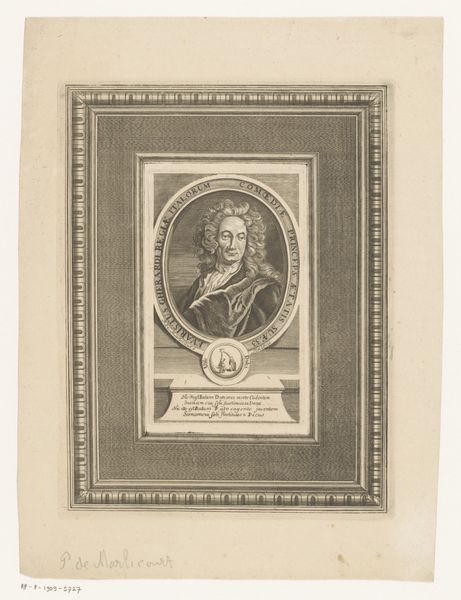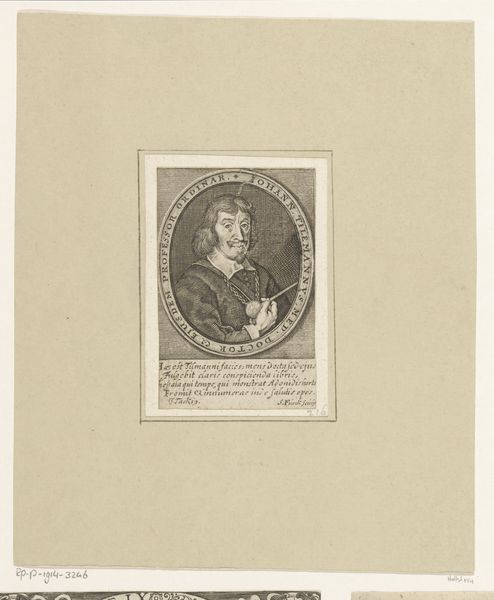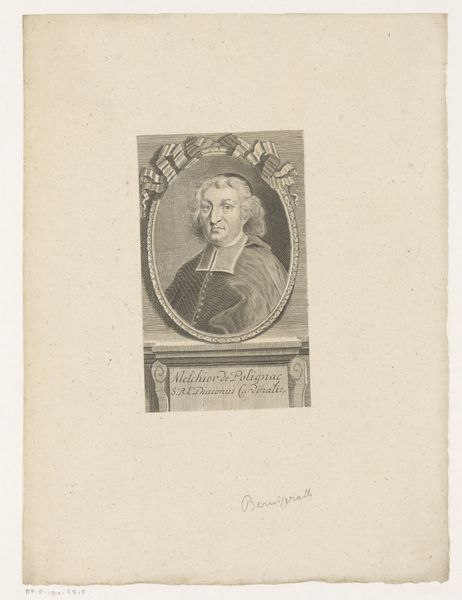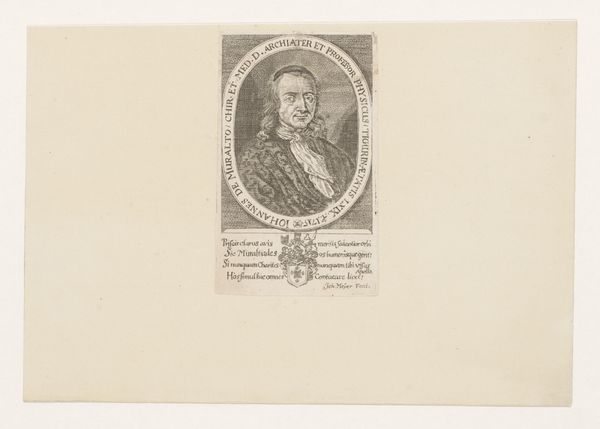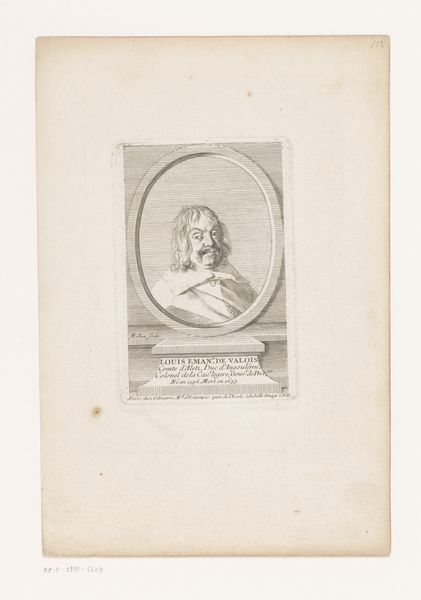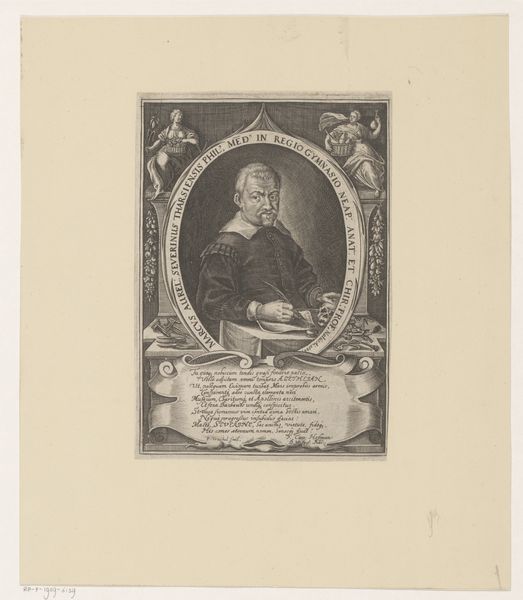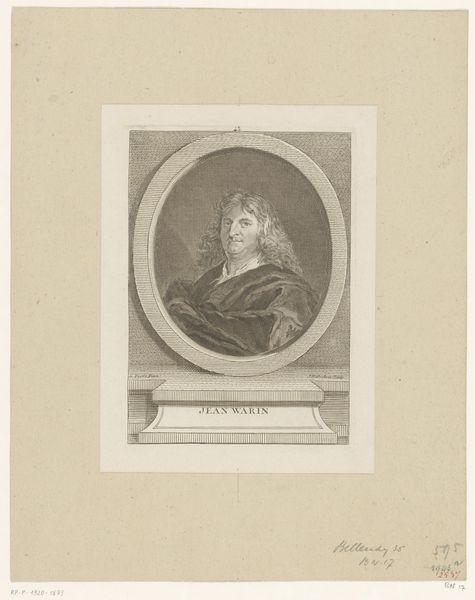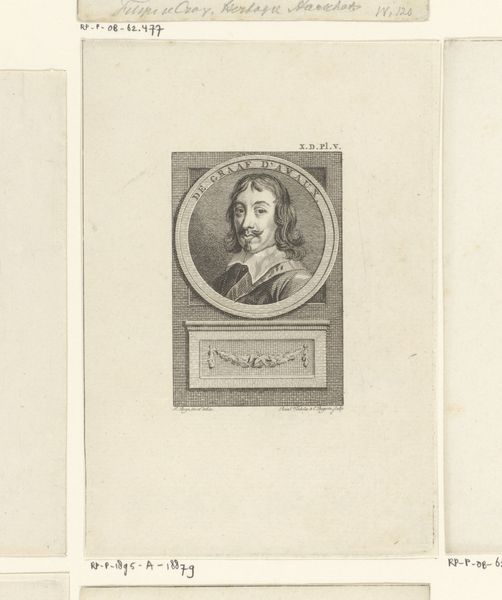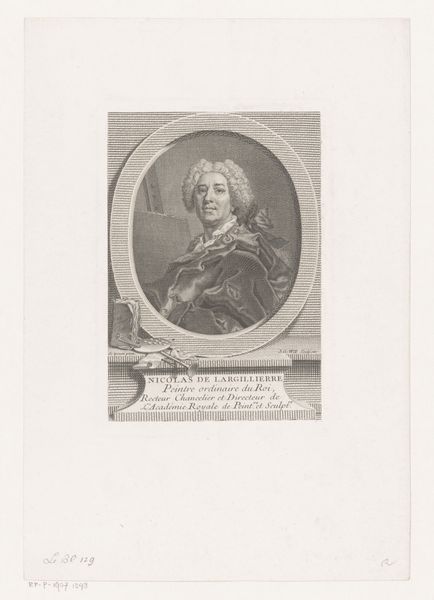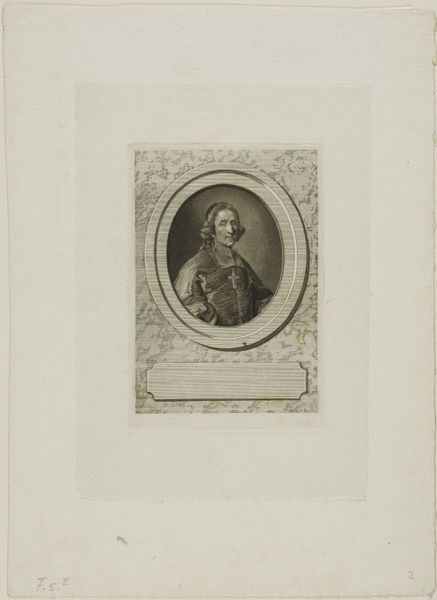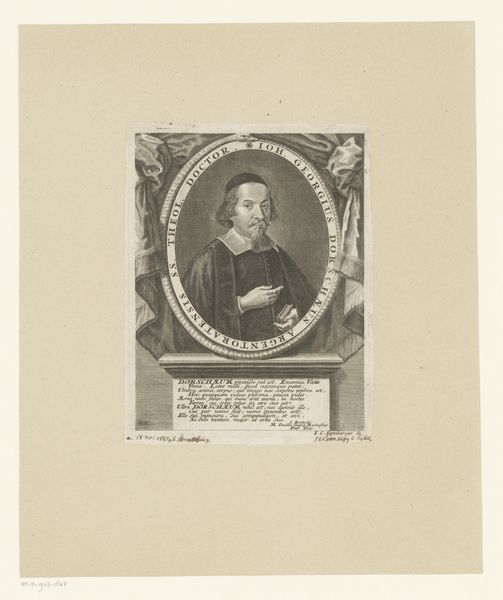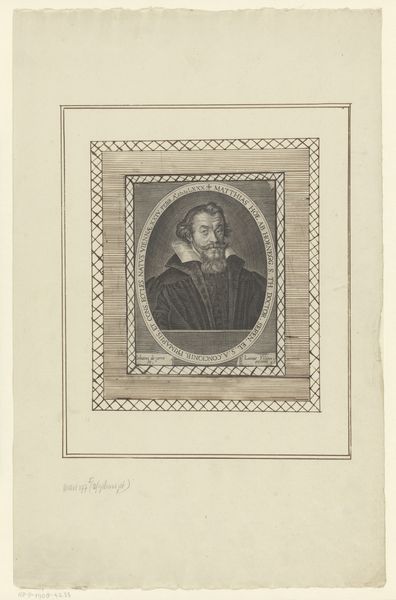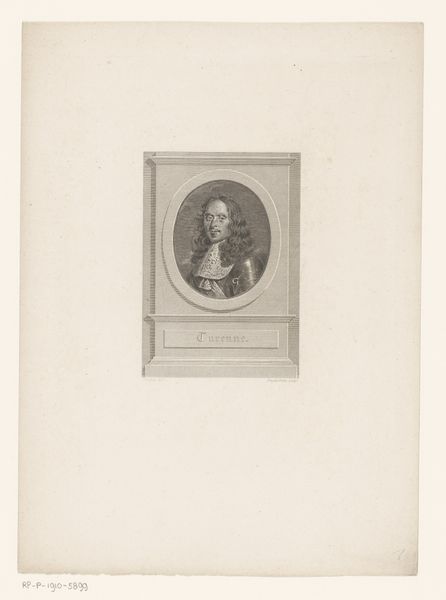
Dimensions: height 103 mm, width 72 mm
Copyright: Rijks Museum: Open Domain
Editor: We’re looking at Reinier Vinkeles' "Portret van Cornelis Tromp," an engraving dating from around 1790 at the Rijksmuseum. It depicts a man in a decorative oval frame, above a scene of ships at sea. What strikes me is the almost...official nature of it. How should we interpret a piece like this? Curator: It's important to consider the social function of portrait engravings during the late 18th century. They served as a form of public commemoration, often celebrating individuals of power and influence. This print, therefore, participates in the construction of Tromp’s public image. Editor: So, beyond just likeness, it's trying to convey a certain message? Curator: Precisely. Consider the pairing of Tromp’s portrait with the naval scene. It reinforces his identity as a naval hero. These images weren't merely distributed, they circulated within specific networks—consider who was buying, commissioning, or displaying such works. Who had access to the depicted figure, and who would likely receive and appreciate such artwork? Editor: So it's not just about the individual, but the whole social structure supporting him? The artist, Vinkeles, probably wasn’t neutral either, was he? Curator: Hardly. Vinkeles operated within a system of patronage and artistic production. By creating this image of Tromp, he’s participating in a visual culture that reinforces certain social hierarchies. Moreover, this portrait, being a print, allowed for wider distribution compared to a painted portrait. Editor: That makes it feel even more like a carefully orchestrated piece of public relations. I hadn’t considered how much the very act of making and distributing an image contributes to the subject’s fame, for better or worse. Curator: Absolutely. We can see this as an early form of image management. Think of it as the 18th-century equivalent of carefully curated social media profiles. This makes you consider not just who the image is OF, but who it's FOR. Editor: So it's a good reminder that art never exists in a vacuum. Everything is connected to the culture and society that produced it. Thank you.
Comments
No comments
Be the first to comment and join the conversation on the ultimate creative platform.
